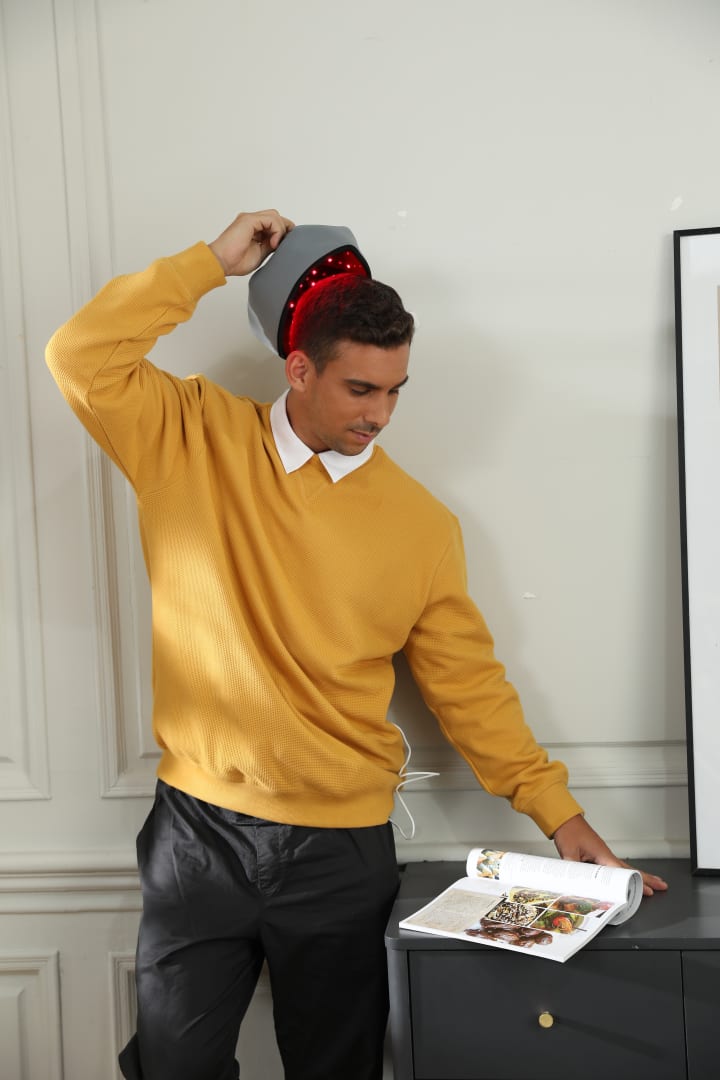My Hair Journey: How I Fixed My Stunted Hair Growth
By Craig Smith

I have always loved my hair. It was my pride and joy, my crowning glory, my signature feature. I used to get compliments on how long, thick, and shiny it was. I enjoyed styling it in different ways, from braids to buns to curls. I felt confident and beautiful with my hair.
But then something changed. I noticed that my hair was not growing as fast as it used to. It seemed to have reached a plateau, a limit, a dead end. It looked thin, dull, and lifeless. I started to lose more hair than usual, finding strands on my pillow, in the shower, and on my brush. I felt insecure and unhappy with my hair.

I tried to find out what was causing my stunted hair growth. I did some research online and learned that there are many factors that can affect hair growth, such as genetics, hormones, stress, diet, health conditions, medications, and environmental factors. I realized that some of these factors applied to me. I had a family history of hair loss, I was going through a stressful period at work, I was not eating well or taking supplements, and I was using harsh hair products and heat styling tools.
I decided to take action and fix my stunted hair growth. I wanted to restore my hair’s health and vitality. I wanted to feel good about my hair again. Here are some of the steps that I took to achieve my hair goals.
I improved my diet and nutrition. I learned that my hair is made of protein, so it needs adequate protein intake to grow and repair itself. I started to eat more eggs, fish, chicken, beans, nuts, and seeds. I also added vitamins and minerals that support hair health, such as iron, zinc, biotin, vitamin C, vitamin D, and vitamin E. I got these nutrients from fruits, vegetables, whole grains, dairy products, and supplements. I avoided foods that can cause inflammation or hormonal imbalance, such as sugar, refined carbs, alcohol, caffeine, and processed foods.
I massaged my scalp regularly. I learned that scalp massage can stimulate blood circulation and oxygen delivery to the hair follicles, which can promote hair growth and prevent hair loss. I used my fingertips or a scalp massager to gently massage my scalp in circular motions for a few minutes every day. I also used oils or essential oils that have benefits for hair growth, such as coconut oil, olive oil, castor oil, rosemary oil, lavender oil, or peppermint oil.
I used gentle hair products and avoided heat styling. I learned that some hair products can contain harsh chemicals or ingredients that can damage my hair or cause buildup on my scalp. This can interfere with hair growth and lead to breakage or shedding. I chose natural or organic hair products that are free of sulfates, parabens, silicones, alcohol, and artificial fragrances. I also avoided heat styling tools such as blow dryers, curling irons, or flat irons that can dry out my hair and cause split ends or brittleness. If I had to use heat styling tools occasionally I used a heat protectant spray or serum beforehand.

I trimmed my hair regularly. I learned that trimming my hair may seem counterintuitive if I wanted to grow it longer but it can actually help prevent further damage and promote healthy growth. Split ends can travel up the hair shaft and cause breakage or thinning of the hair. By trimming my hair every 6 to 8 weeks I got rid of the damaged ends and kept my hair looking healthy and fresh.
I tried red light therapy for hair growth. I learned that red light therapy is a treatment that uses low-level laser therapy (LLLT) to stimulate hair growth by increasing blood flow and cellular energy in the scalp. Best red light therapy has been shown to be effective for various types of hair loss such as androgenetic alopecia (male or female pattern baldness), alopecia areata (patchy hair loss), telogen effluvium (stress-induced hair loss), or chemotherapy-induced alopecia . Red light therapy can also improve the quality and thickness of the existing hairs by increasing collagen production and reducing inflammation.
Red light therapy is a safe and painless treatment that does not cause any adverse effects or downtime. You can get red light therapy from a professional clinic or salon or you can use a red light cap for hair growth at home. A red light therapy cap is a device that fits over your head and emits red light to your scalp through LED lights embedded in the cap. You can use a red light therapy cap for about 15 to 30 minutes a day for several weeks or months depending on your condition and goals.
Red light therapy is not a miracle cure for stunted hair growth but it can be a helpful addition to your overall hair care routine. It can complement other methods of fixing stunted hair growth such as improving your diet and nutrition massage your scalp regularly use gentle hair products and avoid heat styling trim your hair regularly.

These are the steps that I took to fix my stunted hair growth and get the long, thick, and shiny hair that I always wanted. I noticed a significant improvement in my hair’s health and appearance after following these steps for a few months. My hair started to grow faster and stronger, it looked more vibrant and glossy, and I felt more confident and happy with my hair.
I hope this story has inspired you to take action and fix your stunted hair growth too. You deserve to have healthy, beautiful hair that makes you feel good about yourself. Remember, you are not alone in this journey. There are many people who have faced the same problem and have overcome it with natural and effective methods. You can do it too!
Have you ever experienced stunted hair growth? What did you do to fix it? Do you have any other tips or suggestions for fixing stunted hair growth? Share your thoughts and stories in the comments below! I would love to hear from you!
About the Creator
Health First
Let's get healthy! And things will change someday.
Enjoyed the story? Support the Creator.
Subscribe for free to receive all their stories in your feed. You could also pledge your support or give them a one-off tip, letting them know you appreciate their work.






Comments
There are no comments for this story
Be the first to respond and start the conversation.